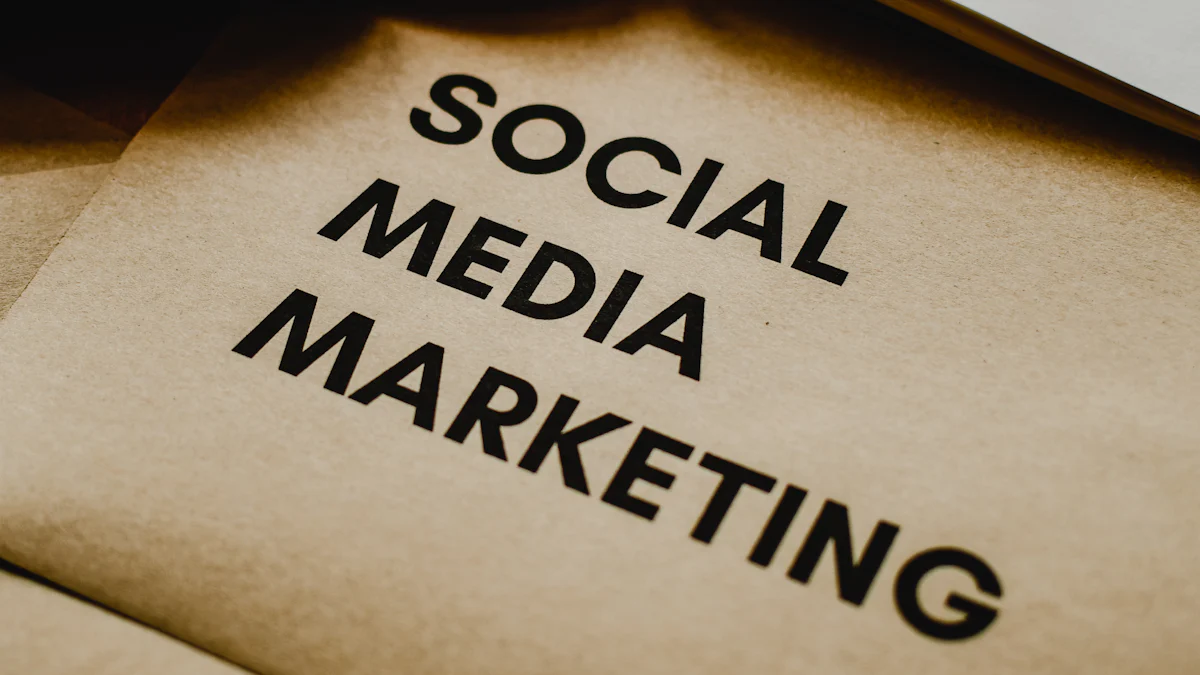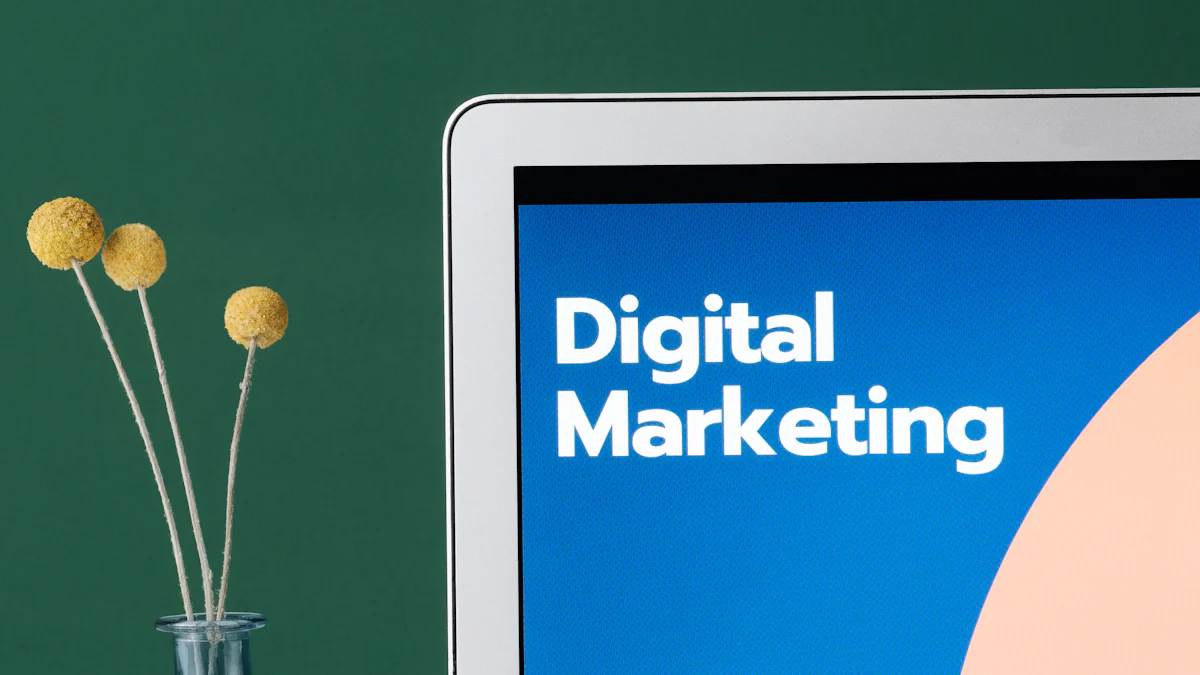Unlocking the Benefits of Influencer Whitelisting for Brands and Influencers

Whitelisting influencer content is a game-changer in modern marketing. It allows you to leverage an influencer's social media presence to boost your brand's visibility. By granting advertising permissions, you can run ads through the influencer's account, making your content appear more authentic and relatable. This strategy not only enhances your reach but also builds trust with your audience. In fact, 88% of consumers trust influencer recommendations, making whitelisting influencer content a powerful tool. Both brands and influencers benefit from this collaboration, creating a win-win situation in the ever-evolving world of influencer marketing.
Understanding Influencer Whitelisting
What is Influencer Whitelisting?
Influencer whitelisting is a marketing strategy where influencers grant brands permission to use their social media accounts for advertising. This process allows brands to run ads through the influencer's handle, making the content appear more genuine and relatable to the audience. By doing so, brands can leverage the influencer's established trust and credibility to enhance their marketing efforts.
Whitelisting differs from traditional brand-owned ads. It takes the partnership to a new level by allowing brands to create ads that align closely with the influencer's style and voice. This approach not only extends the reach of the brand's message but also ensures that the content resonates well with the target audience.
How Does Influencer Whitelisting Work?
The process of influencer whitelisting involves several key steps:
-
Permission Granting: The influencer grants the brand advertising permissions to their social media accounts. This step is crucial as it allows the brand to access the influencer's audience directly.
-
Ad Creation: Once permissions are granted, the brand can create ads using the influencer's handle. These ads can be tailored to fit the influencer's style, ensuring authenticity and engagement.
-
Audience Targeting: Brands can control who sees the whitelisted posts. This means they can target specific demographics or lookalike audiences, expanding their reach and attracting new customers.
-
Content Management: Brands have the ability to make small edits to the influencer's posts. This flexibility allows them to align the content with their messaging while maintaining the influencer's unique voice.
-
Performance Monitoring: Whitelisting enables brands to track the performance of their ads. They can conduct A/B testing to optimize their strategies based on real-time analytics.
By following these steps, both brands and influencers can benefit from increased exposure and engagement. Influencer whitelisting creates a win-win situation, enhancing the effectiveness of marketing campaigns and fostering stronger partnerships.
Benefits of Influencer Whitelisting for Brands

Enhanced Reach and Engagement
When you engage in influencer whitelisting, you unlock a world of possibilities for your brand. By leveraging an influencer's established audience, you can significantly enhance your reach. This strategy allows you to tap into new demographics and expand your market presence. With whitelisting, you gain control over ad management, enabling you to optimize influencer content for better performance. This means you can target the right audience and drive results at scale, promising a higher return on investment (ROI).
Moreover, whitelisting strengthens the credibility of influencers. When you collaborate with them, their followers see your brand as trustworthy. This leads to higher engagement rates, as audiences are more likely to interact with content that feels authentic and relatable. By promoting content through influencer profiles, you can access new audiences and gain new followers, further boosting your brand's visibility.
Authentic Content Creation
In today's digital landscape, authenticity is key. Influencer whitelisting allows you to create content that resonates with your audience. By working closely with influencers, you can ensure that your branded content aligns with their unique style and voice. This collaboration results in content that feels genuine, enhancing its appeal to the audience.
Whitelisting also provides you with the flexibility to make small edits to influencer posts. This ensures that the content aligns with your brand messaging while maintaining the influencer's authenticity. The result is a seamless blend of your brand's identity with the influencer's personal touch, creating a powerful connection with the audience.
Improved Targeting and Analytics
One of the standout benefits of influencer whitelisting is the ability to improve targeting and analytics. You have complete control over who sees the influencer's posts. This means you can tailor your campaigns to specific demographics or utilize dark posts for exclusive audience targeting. By doing so, you can convert audience members into customers and expand your reach.
Whitelisting also enables you to conduct A/B testing on ads. This allows you to compare the performance of influencer content with traditional brand ads, helping you optimize your marketing strategies. With access to real-time analytics, you can track the success of your campaigns and make data-driven decisions to enhance your brand's impact.
Benefits of Influencer Whitelisting for Influencers
Increased Exposure and Followers
When you participate in influencer whitelisting, you open the door to a wider audience. Brands use your social media profile to run ads, which means more people see your content. This increased visibility can lead to a surge in followers. As more users discover your unique style and voice, they become interested in what you have to offer. Your follower count grows, and with it, your influence in the social media landscape.
Whitelisting also helps you reach audiences you might not have accessed on your own. Brands often target specific demographics or lookalike audiences, expanding your reach beyond your usual followers. This exposure not only boosts your profile but also enhances your credibility as an influencer. People see you as someone trusted by brands, which can further increase your appeal.
Revenue Opportunities
Influencer whitelisting opens up new revenue streams for you. When brands whitelist your content, they often compensate you for the use of your social media accounts. This can be a lucrative opportunity, especially if you collaborate with multiple brands. The more successful your whitelisting campaigns are, the more brands will want to work with you.
Additionally, increased exposure can lead to more sponsorship deals. As your follower count rises, brands see the potential in partnering with you. They recognize the value of your influence and are willing to invest in your platform. This can lead to long-term partnerships and consistent income, providing financial stability in the ever-changing world of influencer marketing.
Strengthened Brand Partnerships
Whitelisting strengthens your relationships with brands. When you allow them to use your social media profile for advertising, you demonstrate trust and collaboration. This mutual respect can lead to stronger partnerships. Brands appreciate influencers who are willing to work closely with them, and they often reward this loyalty with more opportunities.
By participating in whitelisting, you also gain insights into brand strategies. You learn about their target audiences and marketing goals, which can help you tailor your content to align with their needs. This knowledge makes you a valuable partner, increasing the likelihood of future collaborations. As you build these relationships, you establish yourself as a key player in the influencer marketing industry.
Types of Whitelisting Influencer Content

In the world of influencer marketing, whitelisting influencer content offers various ways to amplify your brand's message. Let's explore the different types of whitelisting content that can elevate your marketing strategy.
Boosting Branded Content
Boosting branded content is a powerful way to enhance the visibility of your message. When you boost content, you take existing posts from influencers and amplify them to reach a broader audience. This method allows you to leverage the influencer's established trust and credibility. By doing so, you ensure that your brand's message resonates with the audience in an authentic manner.
Boosting branded content also provides you with the flexibility to target specific demographics. You can choose who sees the content, ensuring it reaches the most relevant individuals. This targeted approach not only increases engagement but also maximizes the return on investment for your marketing efforts.
Partnership Ads
Partnership ads represent a collaborative effort between brands and influencers. In this setup, you work closely with influencers to create ads that blend organic and paid reach. These ads appear on the influencer's social media profiles, making them feel more genuine and relatable to their followers.
The beauty of partnership ads lies in their ability to combine the influencer's unique style with your brand's messaging. This collaboration results in content that feels seamless and authentic. As a result, audiences are more likely to engage with the ads, leading to increased brand awareness and customer loyalty.
Dark Posting
Dark posting is a strategic approach to whitelisting influencer content. Unlike traditional posts, dark posts do not appear on the influencer's public feed. Instead, they are shown only to targeted audiences. This method allows you to reach specific groups without cluttering the influencer's profile.
Dark posting offers several advantages. It enables you to conduct A/B testing, allowing you to compare the performance of different ads. You can make data-driven decisions to optimize your campaigns and improve targeting. Additionally, dark posting helps reduce audience fatigue by ensuring that only the most relevant individuals see the content.
By utilizing these types of whitelisting influencer content, you can create a dynamic and effective marketing strategy. Each method offers unique benefits, allowing you to tailor your approach to meet your brand's goals. Whether you're boosting branded content, creating partnership ads, or using dark posting, whitelisting provides a win-win situation for both brands and influencers.
Practical Tips and Best Practices for Influencer Whitelisting
Navigating the world of influencer whitelisting can seem daunting, but with the right approach, you can unlock its full potential. Whether you're a brand or an influencer, understanding the best practices can lead to successful collaborations and impactful marketing strategies.
For Brands
-
Choose the Right Influencer: Start by selecting influencers whose values align with your brand. Look for those who have a genuine connection with their audience. This ensures that your message resonates well and maintains authenticity.
-
Set Clear Objectives: Define what you want to achieve with influencer whitelisting. Whether it's increasing brand awareness or driving sales, having clear goals will guide your strategy and help measure success.
-
Communicate Openly: Establish open lines of communication with influencers. Discuss your expectations and provide them with the necessary resources to create content that aligns with your brand messaging. This collaboration fosters trust and ensures a seamless partnership.
-
Leverage Analytics: Use the data from whitelisting campaigns to gain insights into audience preferences. Analyze engagement metrics to understand what works and what doesn't. This information helps you optimize future campaigns and tailor content to better resonate with your target audience.
-
Maintain Flexibility: While you have control over content and targeting, allow influencers some creative freedom. Their unique style is what attracts their followers, so maintaining that authenticity is crucial for effective whitelisting influencer content.
For Influencers
-
Understand Your Audience: Know your followers and what they value. This knowledge helps you create content that not only aligns with brand objectives but also resonates with your audience, enhancing engagement.
-
Negotiate Fairly: When entering a whitelisting partnership, ensure that compensation reflects the value you bring. Discuss terms openly with brands to establish a mutually beneficial agreement.
-
Stay Authentic: While collaborating with brands, maintain your unique voice and style. Your authenticity is what makes you appealing to your audience, so ensure that whitelisting content feels genuine and relatable.
-
Track Performance: Monitor the performance of whitelisted posts. Use analytics to understand what content drives the most engagement. This data can help you refine your approach and demonstrate your value to brands.
-
Build Long-term Relationships: Focus on creating lasting partnerships with brands. Consistent collaboration can lead to more opportunities and a stable income stream. Show brands that you are a reliable partner by delivering quality content and meeting agreed-upon objectives.
By following these practical tips, both brands and influencers can maximize the benefits of influencer whitelisting. This approach not only enhances marketing efforts but also strengthens partnerships, leading to greater success in the dynamic world of social media marketing.
Step-by-Step Guide to Implementing Influencer Whitelisting
Ready to dive into the world of influencer whitelisting? Let's break it down by platform so you can start leveraging this powerful marketing strategy.
On Facebook
-
Set Up Business Manager: First, ensure you have a Facebook Business Manager account. This tool helps you manage your ads and collaborate with influencers seamlessly.
-
Request Access: Reach out to your chosen influencer and request access to their Facebook page. They need to grant you permission to run ads on their behalf.
-
Create Ads: Once you have access, create ads that align with the influencer's style. Use their voice to craft content that feels authentic to their audience.
-
Target Audience: Facebook allows you to target specific demographics. Use this feature to reach lookalike audiences and expand your brand's reach.
-
Monitor Performance: Keep an eye on ad performance. Facebook provides detailed analytics, helping you understand what works and what doesn't. Use this data to optimize your strategy.
On Instagram
-
Connect Accounts: Start by connecting your Instagram account to Facebook Business Manager. This step is crucial for managing ads effectively.
-
Collaborate with Influencers: Work closely with influencers to gain access to their Instagram profiles. They need to approve your request to run ads through their accounts.
-
Design Engaging Content: Create visually appealing ads that resonate with the influencer's followers. Instagram is a visual platform, so focus on high-quality images and videos.
-
Utilize Instagram's Features: Take advantage of Instagram's targeting options. You can reach specific groups based on interests, behaviors, and demographics.
-
Analyze Results: Use Instagram Insights to track the success of your campaigns. This data helps you refine your approach and improve future whitelisting efforts.
On TikTok
-
Join TikTok for Business: Sign up for TikTok for Business to access advertising tools. This platform is essential for running influencer whitelisting campaigns.
-
Partner with Influencers: Connect with influencers who align with your brand. They need to grant you permission to use their TikTok profiles for ads.
-
Create Authentic Content: TikTok thrives on creativity. Develop ads that match the influencer's unique style and engage their audience.
-
Leverage TikTok's Algorithm: Use TikTok's targeting capabilities to reach the right audience. The platform's algorithm helps you connect with users who are likely to engage with your content.
-
Evaluate Campaigns: Monitor your campaigns using TikTok's analytics. This information provides insights into audience preferences and helps you optimize your strategy.
By following these steps, you can effectively implement influencer whitelisting across Facebook, Instagram, and TikTok. This approach not only enhances your brand's visibility but also fosters stronger partnerships with influencers.
Influencer whitelisting offers a treasure trove of benefits for both brands and influencers. By allowing brands to control ad management and tailor content, whitelisting ensures that your message resonates with the right audience. This strategy not only amplifies your promotional efforts but also opens new revenue streams for influencers. You gain valuable insights into optimizing marketing strategies, making data-informed decisions, and refining approaches for better outcomes. Embrace influencer whitelisting as a strategic tool to enhance visibility, build trust, and foster stronger partnerships in the dynamic world of social media marketing.
FAQ
What is influencer whitelisting?
Influencer whitelisting involves granting advertising permissions to brands or partners. This allows them to use an influencer’s social handles, content, and audience targeting to achieve specific campaign goals. Brands collaborate with influencers who create engaging content and connect with a receptive audience.
How does influencer whitelisting work?
In influencer whitelisting, a brand asks an influencer to run paid ads through the influencer’s social account instead of their own. Typically, this happens when a brand and influencer already collaborate, and the brand wants to enhance the partnership by including whitelisting permissions. The brand runs paid ads using a post made on the influencer’s account, gaining more control over the ad, insights, and results.
What is the difference between whitelisting and dark posting?
Whitelisting allows a brand to run paid ads using a post on the influencer’s account. In contrast, dark posting lets a brand run paid ads using the influencer’s name, but these posts don’t appear on the influencer’s account. Dark posting targets specific audiences without cluttering the influencer's profile.
Why do brands engage in influencer whitelisting?
Brands engage in influencer whitelisting because it provides more control over the ad’s copy, imagery, target audience, budget, and duration. This strategy helps brands optimize their campaigns and achieve better results by leveraging the influencer's established trust and audience.
What should influencers know before agreeing to whitelisting?
As an influencer, your accounts and brand are crucial to your business. Ensure there is an approval process where you can review and approve the ad before it runs. Understand that the brand will control the ad’s content and targeting, so clear communication is essential.
Can whitelisting affect an influencer's brand?
Yes, whitelisting can impact an influencer's brand. It’s important to collaborate with brands that align with your values and audience. This ensures that the ads feel authentic and maintain your credibility with your followers.
How can influencers benefit from whitelisting?
Influencers benefit from increased exposure and potential revenue opportunities. Brands often compensate influencers for using their social media accounts, and successful whitelisting campaigns can lead to more sponsorship deals and long-term partnerships.
What are the potential risks of influencer whitelisting?
Potential risks include loss of control over content and audience perception. If not managed properly, whitelisting can lead to content that doesn’t align with the influencer’s style, potentially affecting their relationship with followers.
How can brands ensure successful whitelisting campaigns?
Brands can ensure success by choosing the right influencers, setting clear objectives, and maintaining open communication. Leveraging analytics to understand audience preferences and allowing influencers some creative freedom also contribute to effective campaigns.
What steps should influencers take to protect their brand during whitelisting?
Influencers should negotiate fair compensation, stay authentic, and track performance. Building long-term relationships with brands and ensuring clear communication about expectations and content approval can help protect their brand during whitelisting.
See Also
Exploring The Pros And Cons Of Influencer Whitelisting
Ultimate Resource For Achieving Influencer Whitelisting Success
A Deep Dive Into Influencer Whitelisting Costs
Effective Techniques For Social Media Whitelisting Mastery
Strategies For Successful Implementation Of Social Media Whitelisting
